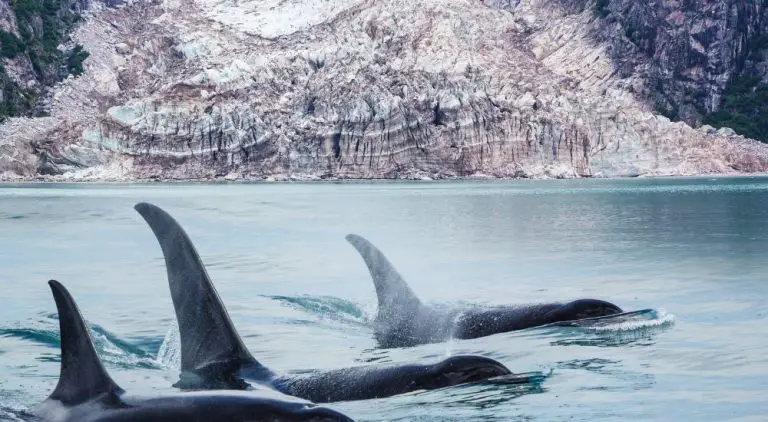How Cold is Alaska in Winter? A Comprehensive Guide to Alaska’s Winter Temperatures
Alaska is known for its extreme weather conditions, particularly during the winter months. The state is located in the northernmost part of the United States and experiences some of the coldest temperatures in the country. Many people wonder just how cold Alaska gets in the winter, and what it’s like to live in such frigid conditions.

During the winter months, Alaska can experience temperatures that drop well below freezing. In some areas, temperatures can reach as low as -60°F, making it one of the coldest places on earth. This extreme cold can make daily life challenging, from driving to work to simply staying warm indoors. However, Alaskans have learned to adapt to the harsh winter conditions and have developed ways to stay warm and comfortable.
Despite the cold, winter in Alaska also offers some unique experiences, such as viewing the Northern Lights or participating in winter sports like skiing and snowmobiling. For those who can brave the cold, Alaska’s winter wonderland can be a truly unforgettable experience.
Understanding Alaska’s Winter Climate

Alaska is known for its cold winter climate, which is influenced by various factors such as latitude, topography, and ocean currents. In this section, we will explore the different aspects of Alaska’s winter climate, including temperature variations across regions, factors affecting winter weather, daylight and darkness, extreme weather events, transition months, unique winter phenomena, wildlife in winter, winter activities and travel tips, preparing for Alaska’s winter, and historical temperature records.
Temperature Variations Across Regions
Alaska’s winter climate varies greatly across different regions. The Arctic and subarctic regions experience the coldest temperatures, with average winter temperatures ranging from -30°F to -10°F (-34°C to -23°C). The interior region experiences a subarctic climate with average winter temperatures ranging from -20°F to 10°F (-29°C to -12°C). The southcentral and southeast regions have a temperate maritime climate, with average winter temperatures ranging from 10°F to 30°F (-12°C to -1°C).
Factors Affecting Winter Weather
Alaska’s winter weather is influenced by various factors, such as latitude, topography, and ocean currents. The state’s high latitude means that it receives less sunlight during the winter months, resulting in colder temperatures. The state’s topography also plays a role, with mountain ranges affecting precipitation patterns and wind direction. The ocean currents in the Gulf of Alaska and Bering Sea also influence Alaska’s winter weather, bringing storms and precipitation to the state.
Daylight and Darkness
Alaska’s winter is also characterized by long periods of darkness and short periods of daylight. During the winter solstice, which occurs around December 21, some parts of Alaska experience less than 4 hours of daylight. The horizon can also be obscured by mountains and trees, further reducing the amount of sunlight that reaches the ground.
Extreme Weather Events
Alaska’s winter is also known for its extreme weather events, such as blizzards, snowstorms, and high winds. These events can cause power outages and travel disruptions, so it’s important to be prepared for them.
Transition Months
The transition months of September, October, November, March, April, and May can be unpredictable in Alaska, with temperatures fluctuating between warm and cold. It’s important to pack layers and be prepared for a range of weather conditions.
Alaska’s Unique Winter Phenomena
Alaska’s winter is also known for its unique phenomena, such as the Northern Lights and winter wonderland scenery. The state’s glaciers, polar bears, and Arctic Ocean also offer unique experiences for winter travelers.
Wildlife in Winter
Alaska’s wildlife also adapts to the winter climate, with many animals growing thicker fur and hibernating during the winter months. Winter travelers should be aware of the potential for encounters with wildlife and take appropriate precautions.
Winter Activities and Travel Tips
Alaska offers a range of winter activities, such as skiing, snowmobiling, and fishing. Winter travelers should pack appropriately for these activities and be prepared for the cold weather. It’s also important to plan ahead and be aware of potential travel disruptions caused by winter weather.
Preparing for Alaska’s Winter
To prepare for Alaska’s winter, it’s important to pack warm clothing, including layers, hats, gloves, and boots. Winter travelers should also be prepared for potential power outages and travel disruptions caused by extreme weather events.
Historical Temperature Records
Alaska has recorded some of the coldest temperatures in the United States, with the lowest temperature on record being -80°F (-62°C) at Prospect Creek in 1971. Fort Yukon also holds the record for the coldest temperature ever recorded in the contiguous United States, with a temperature of -78°F (-61°C) in 1947.
Practical Information for Visitors

Best Time to Visit
Alaska is a winter wonderland, but it can be challenging to visit during the colder months. The best time to visit Alaska depends on what you want to do and see. Summer is the peak tourist season, but winter is perfect for those seeking a unique experience. The fall and spring offer a balance of fewer crowds and milder weather.
What to Wear and Pack
Alaska’s winter weather can be unpredictable, so it’s essential to pack layers. Visitors should bring a warm coat, gloves, hat, and waterproof boots. It’s also crucial to pack sunscreen, lip balm, and sunglasses as the sun’s reflection off the snow can be intense.
Travel Safety and Considerations
Visitors should plan their trip carefully and be aware of the weather conditions. In Alaska, it’s common for flights to be canceled or delayed due to weather. It’s also essential to be mindful of wildlife and follow safety guidelines.
Destinations and Attractions
Alaska is home to many unique destinations and attractions, including Denali National Park, the Inside Passage, the Aleutian Islands, Southeast Alaska, Southcentral Alaska, Southwest Alaska, and the Far North. Visitors can enjoy activities such as skiing, dog sledding, and viewing the Northern Lights.
Cultural Insights and Local Customs
Alaska is known for its rich culture and traditions. Visitors should take the time to learn about Alaska’s indigenous communities and their customs. Respect for the environment is also essential in Alaska, so visitors should be mindful of their impact on the environment.
In summary, Alaska is a beautiful destination that offers a unique experience for visitors. With proper planning and preparation, visitors can enjoy all that Alaska has to offer, no matter the time of year.
Frequently Asked Questions

What is the average winter temperature in Alaska?
The average winter temperature in Alaska varies depending on the location. However, the state’s interior and northern regions are usually the coldest. The average temperature in these regions ranges from 0°F to -20°F (-17°C to -28°C) during the winter months. Coastal regions, on the other hand, tend to be milder, with average temperatures ranging from 20°F to 30°F (-7°C to -1°C).
What are the typical temperature ranges in Alaska during winter months?
The typical temperature ranges in Alaska during winter months vary depending on the location. The interior and northern regions of Alaska usually experience the coldest temperatures, ranging from -20°F to -40°F (-28°C to -40°C) on average. Coastal regions tend to be milder, with average temperatures ranging from 20°F to 30°F (-7°C to -1°C). However, temperatures can drop below -60°F (-51°C) during extreme cold snaps.
Which month is usually the coldest in Alaska?
January is usually the coldest month in Alaska. During this time, temperatures in the interior and northern regions can drop to -20°F to -40°F (-28°C to -40°C) on average. Coastal regions tend to be milder, with average temperatures ranging from 20°F to 30°F (-7°C to -1°C).
Can you describe the variation in Alaska’s weather throughout the year?
Alaska’s weather varies greatly throughout the year. During the winter months, the state experiences extremely cold temperatures, with snow and ice covering the ground. Spring brings warmer temperatures and the beginning of the thaw. Summer months are mild, with temperatures ranging from 60°F to 80°F (16°C to 27°C) on average. Fall brings cooler temperatures and the beginning of the freeze.
Is it possible to live comfortably in Alaska despite the cold temperatures?
Yes, it is possible to live comfortably in Alaska despite the cold temperatures. Alaskans are accustomed to the cold and have adapted their lifestyles accordingly. Homes are well-insulated, and many have wood stoves or other heating sources. Winter clothing is essential, and residents typically dress in layers to stay warm. Additionally, many Alaskans enjoy outdoor winter activities such as skiing, snowmobiling, and ice fishing.
Do the seasons in Alaska include a distinct summer, fall, winter, and spring?
Yes, the seasons in Alaska include a distinct summer, fall, winter, and spring. However, the timing and duration of each season vary depending on the location. The interior and northern regions experience longer and colder winters, while coastal regions tend to have milder temperatures and shorter winters. The summer months are typically mild and pleasant, with long daylight hours.






